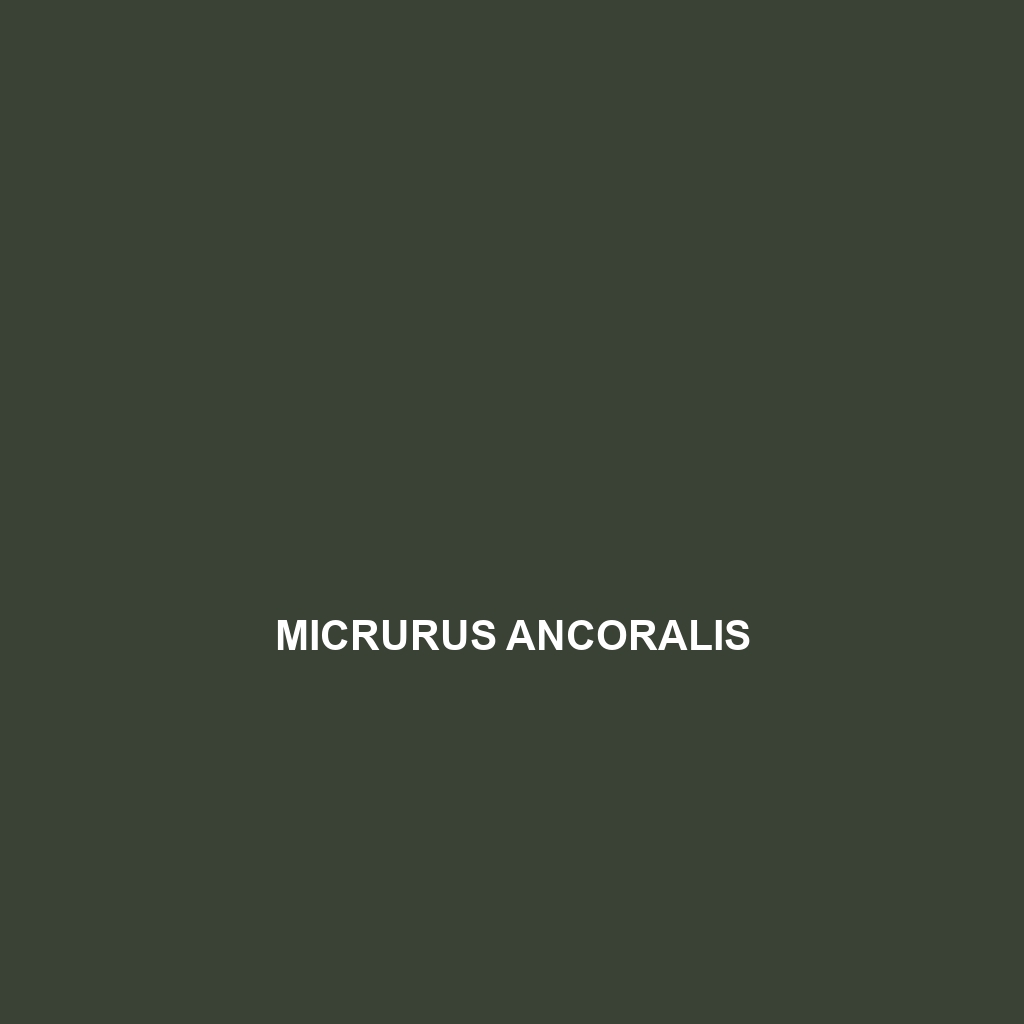Common Name
Micrurus ancoralis
Scientific Name
Micrurus ancoralis
Habitat
Micrurus ancoralis, commonly known as the Anchor Coral Snake, is primarily found in the tropical regions of Central and South America. The species typically inhabits a variety of environments, including rainforests, savannas, and occasionally temperate forests. These habitats provide ample cover and suitable conditions for their survival. The climate in these areas is generally warm, with high humidity contributing to the lush vegetation that supports a diverse range of wildlife.
Physical Characteristics
The Anchor Coral Snake is a strikingly colorful snake, known for its distinctive banding pattern. Adults can reach lengths of about 60 to 90 cm (24 to 35 inches). The background color is typically black or dark brown, adorned with vibrant yellow or white bands that create a striking contrast, making it visually appealing. One of the unique features of Micrurus ancoralis is its slender body, which is characteristic of the coral snake family. The head is relatively small and covered with smooth scales, aiding in their ability to burrow and navigate through dense underbrush.
Behavior
Micrurus ancoralis exhibits primarily nocturnal behavior, meaning it is most active during the night. This behavior not only helps them to avoid predators but also allows them to hunt more effectively. During the day, they tend to stay hidden in leaf litter or beneath logs. They are solitary creatures, and little social interaction is observed beyond mating. These snakes have a unique method of hunting, as they rely on their remarkable camouflage to ambush unsuspecting prey. Their mating rituals typically occur in the spring; males may engage in combat with each other to establish dominance and attract females.
Diet
Micrurus ancoralis is a carnivore, primarily feeding on small mammals, lizards, and amphibians. Their diet predominantly consists of other reptiles and small rodents, and they employ a specialized method of envenomation via their neurotoxic venom, which immobilizes prey efficiently. This snake’s diet plays a crucial role in maintaining the balance of its ecosystem, filtering populations of smaller animals and preventing overpopulation.
Reproduction
The reproductive cycle of Micrurus ancoralis typically takes place in the warmer months, where mating can be observed from late spring to early summer. Females lay clutches of about 3 to 10 eggs, usually in hidden locations providing moisture and warmth for optimal incubation. The eggs hatch after about 60 days, with hatchlings measuring approximately 20 cm (8 inches) long. These juvenile snakes are independent from birth and must fend for themselves, relying on their instinctive hunting behaviors. Parental care is nonexistent post-hatching, as is common in most snake species.
Conservation Status
The conservation status of Micrurus ancoralis is currently classified as Least Concern by the International Union for Conservation of Nature (IUCN). Despite facing habitat loss due to deforestation and urbanization, there are no immediate threats that have been identified to put this species in critical danger. Conservation efforts in its native regions focus on habitat preservation and ecosystem management, which indirectly benefits this species and others sharing similar habitats.
Interesting Facts
One fascinating aspect of Micrurus ancoralis is its ability to deliver potent venom; however, bites to humans are rare due to their reclusive nature. Their vibrant coloration serves as a warning to potential predators, following the principle of aposematism, where bright colors indicate toxicity. Additionally, this species demonstrates remarkable adaptability, able to thrive in varying conditions across its range, making it a subject of interest for researchers studying ecological resilience.
Role in Ecosystem
Micrurus ancoralis serves a vital role in its ecosystem as a predator, helping to control the populations of its prey species, which include small mammals and lizards. By maintaining a balanced food chain, the Anchor Coral Snake contributes to the overall health of its habitat. Furthermore, as a prey item for larger predators, including birds of prey and larger snakes, it plays an integral part in the food web. Its presence is indicative of a healthy, functioning ecosystem, where biodiversity thrives.
